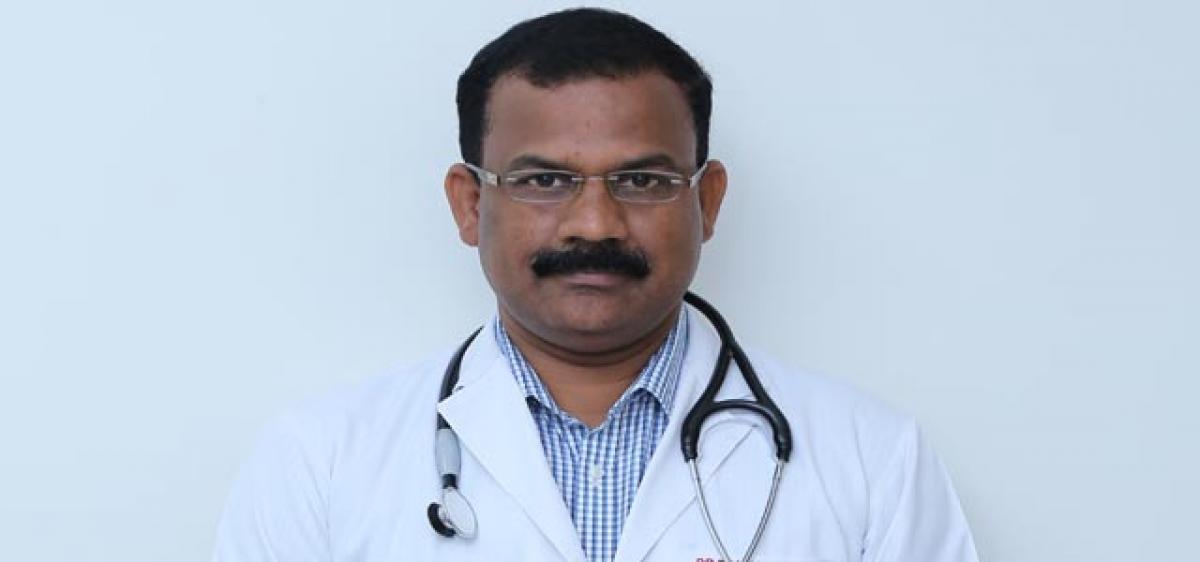Live
- Grand Celebration of MB Church Women’s Revival Conference The women of the MB Church
- Vemulawada Temple Development: Does the TG Endowments Minister want to write her own Agama Shastras for temples?
- Coop banks play key role in economic development
- TTD EO visits Sringeri Sarada Peetham
- Automobile loading using NMG rakes commences
- 555th Prakash Purab celebrated with gaiety
- Good news for Atmakur farmers
- High-risk aortic valve replacement surgery performed successfully
- HMWSSB MD holds review meeting on OTS-2024 scheme
- Dhobi Ghat assessed for potential to host sports complex
Just In

India is the country with the highest burden of TB. The World Health Organisation (WHO) TB statistics for India for 2015 gave an estimated incidence figure of 2.2 million cases of TB for India out of a global incidence of 9.6 million.
World TB Day today
India is the country with the highest burden of TB. The World Health Organisation (WHO) TB statistics for India for 2015 gave an estimated incidence figure of 2.2 million cases of TB for India out of a global incidence of 9.6 million. The TB incidence for India is the number of new cases of active TB disease in India during a certain time period (usually a year).
The estimated TB prevalence figure for 2015 is given as 2.5 million. The TB prevalence is the number of people in India who are living with active TB. Prevalence is usually, but not always given as a percentage of the population.It is estimated that about 40 percent of the Indian population is infected with TB bacteria, the vast majority of whom have latent TB rather than TB disease.
TB, is a contagious infection that usually attacks the lungs. It can also spread to other parts of the body, like the brain and spine. A type of bacteria called Mycobacterium tuberculosis causes it. Through the air, just like a cold or the flu. When someone who’s sick coughs, sneezes, talks, or laughs, tiny droplets that contain the bacteria are released. If you breathe in these nasty germs, you get infected.
TB is contagious, but it’s not easy to catch. The germs grow slowly. You usually have to spend a lot of time around a person who has it. That’s why it’s often spread among co-workers, friends, and family members. Tuberculosis germs don’t thrive on surfaces. You can’t get the disease from shaking hands with someone who has it, or by sharing their food or drink.
A TB infection doesn’t mean you’ll get sick. There are two forms of the disease: Latent TB: You have the germs in your body, but your immune system stops them from spreading. They become inactive. That means you don’t have any symptoms and you’re not contagious. But the infection is still alive in your body and can one day become active. To prevent this, doctors will often prescribe antibiotics. Without treatment, 5 percent to 10 percent of cases develop into active TB.
Active TB disease: This means the germs multiply and can make you sick. You can spread the disease to others. Babies and young children also are at greater risk, because their immune systems aren’t fully formed. Diagnosis is by doing sputum examination, chest xray, mantoux test, and some times by doing bronchoscopy. Treatment varies from 6-9months in pulmonary and extrapulmonary tuberculosis. if it is MDR Tuberculosis then treatment would continue for 18 months.
Drug resistant TB in India
Drug resistant TB has frequently been encountered in India. If a person has drug resistant TB it means that their illness will not respond to at least one of the main TB drugs. The prevalence of multi drug resistant MDR TB has though been believed to be at a low level in most regions of the country. Various studies have found MDR TB levels of about 3 percent in new cases and around 12-17 percent in retreatment cases. However even if there is such a small percentage of cases it still translates in India into large absolute numbers.
Tips to prevent the spread of Tuberculosis
• Avoid close contact with people affected with TB.
• Work on improving your immunity by including diet rich in antioxidants.
• Do not go on a low-carbohydrate diet.
• Maintain good hygiene, wherever you are.
You may not be aware of the fact that being stressed out increases your risk of suffering from a wide range of health complications including tuberculosis. This is the reason, why you should stay away from stress. (The author is Consultant Interventional Pulmonologist Respiratory Intensivist, KIMS Hospitals).
By Dr. Ramana Prasad V Velamuru

© 2024 Hyderabad Media House Limited/The Hans India. All rights reserved. Powered by hocalwire.com







